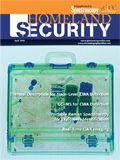Article
Special Issues
Spectroscopy Supplements
From the Editor
In the Wake of Tragedy, Technology Advances
I'm sure every person reading this letter can remember exactly where they were and what they were doing on September 11, 2001. The details and specifics of that day have been the subject of many movies, documentaries, and television specials at this point, as have the events that evolved from that day. However, one aspect of 9/11 that does not often make its way into mainstream pop culture is the impact it has had on the scientific community, particularly the field of analytical chemistry.

David Walsh
Advances in airport-screening technology have exploded, as have advances in portable instrumentation for explosives detection, benchtop instrumentation for chemical weapons identification, and more. The scientific community has made technological leaps at a greatly accelerated pace, and as you may have seen during the media coverage of the new risqué X-ray technology now being implemented in airports worldwide, some outsiders can be downright startled to see some of the technologies that now exist as a result. In many ways, it is as though we have collectively jumped ahead in time, and we are now seeing technological advances that would not have existed if not for that tragic day.
Which brings us to the reason for this supplement. As always, Spectroscopy's goal is to bring the latest advances and the most cutting-edge technologies to members of the analytical chemistry community, and once again, we believe we have achieved this. Here in one issue are all of the research leaders in the field of homeland security. From handheld devices that have been compared to the famous Star Trek "Tricorder" to benchtop instruments right out of an episode of CSI, all of the latest advances in this area are here for your perusal.
It is a certainty that homeland security technologies will continue to advance at their current staggering pace, and Spectroscopy will be there to cover those advances as they happen. So please feel free to contact us, submit a technical article, or simply send an e-mail with your feedback. The next technological leap is always right around the corner.
Enjoy the issue.

David Walsh
Editor-in-Chief

Newsletter
Get essential updates on the latest spectroscopy technologies, regulatory standards, and best practices—subscribe today to Spectroscopy.

